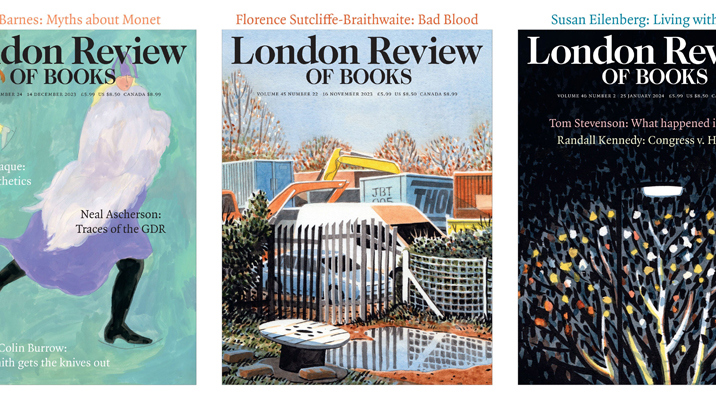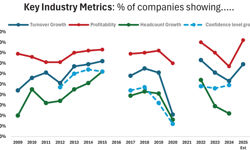
This is a particularly appropriate subject for me. I write to-do lists everywhere (on my phone, on my outlook calendar for the days I work from home, in the margins of notebooks, on sticky notes by my bed).
Sometimes I do that stereotypical thing of writing a to-do list after I have done something, just to get the satisfaction of ticking it off.
I have always taken great satisfaction in completing tasks, and one of the things that I found hard about my transition into the publisher role a couple of years ago was the fact that my to-do lists changed so much. My tasks used to be fairly transactional: I got out what I put into my work. Now, ‘tasks’ suddenly had a new resonance and range.
These days, a bit more experience has taught me to understand more about that cadence. And now I have specifically adjusted my expectations between the things that need to get done and wider company priorities that need parsing and separating into their composite parts.
The first category (things that need to get done) includes tasks that demand immediate attention. Anything preventing people from doing their work or moving projects forward goes to the top of the list, along with anything to do with staff welfare or anything administrative.
I reckon we all have that kind of list staring us down, and these tasks are relatively straightforward and satisfactory to handle (even if we find we sometimes put them off… Typing up minutes, anyone?).
But it’s the second category that’s more interesting. Once you clear the administrative work off your plate, how do you tackle the bigger challenges of taking a company forward and preparing for an unknown future? Where do you even start? If you’re like me, you look to the industry (you read magazines such as this one, join industry panels, attend conferences, befriend clever people in your field). But in the end, your business is unique. You can sometimes feel a little paralysed by fear of the unknown, or uncertainty about the path your competitors are taking. But if I learned anything from my decade in marketing, it is that you are likely to fail more often than you succeed, but you won’t succeed if you don’t try.
As an industry, publishing has been especially elusive and slippery in recent years. Audiences, production and reading habits are all changing. But we are extremely lucky in one respect – our product. We make magazines, and I truly believe that magazines are important. We dispense knowledge (whether in the form of entertainment, news, analysis, practical guidance or business data), which not only brings real value to readers’ lives but can even constitute a contribution to human knowledge or make a difference to the world. Those of us who work in publishing are lucky to be part of that, and it gives our work greater meaning and satisfaction.
The question then becomes: how are we going to keep print magazines alive? The important things to consider here are (1) audience: revisit and reassess; (2) product: consider what we are selling and where and; (3) pricing: analyse and benchmark our products in their geographic and similar markets. (Too bad the first one doesn’t start with a ‘p’, or my to-do list would be very punchy!)
Audience
The audience work comes first and is the most exciting. Companies often talk about ‘customer focus’ without actually doing any research. It’s all too easy to make a lot of subjective internal decisions. Well, I want to go back to the drawing board, and analyse not only our current audience but challenge the assumptions we hold about the identity of the paper and its future readers. We hired a head of audience last year, and we are seeing the benefits of running more surveys and getting more information from our print and digital channels.
This means we can find out not only what people think and feel about our brand and brand extensions, but also the way audiences differ: for example, how is our Instagram audience different from our newsletter audience, and how can we meet the needs of both groups? Which website users are taking advantage of our archive of pieces as a resource?
Understanding these differences and habits means we can plan the future of our business and products more successfully. There is a wealth of useful data here. I want to take all of this and combine it with work on audience personas and user research to get to know our readers better and to find out what they like about – and want from – the LRB.
The next step is to use that data to define the good old ‘customer funnel’. Once we have looked at our customer profiles, we need to make sure we are offering people the right products and advertising them at the right time and in the right places. Where are the future audiences, the people who have never heard of us and need their first point of contact? Who are the people who are ready to give us their email address and would like to stay informed? And finally, who are the people ready to commit to a lifetime of loving and reading the London Review of Books?
Product
Once we have completed a comprehensive analysis of our readers, I want to take what we have discovered and to think seriously about our products and pricing. The print copy of the London Review of Books has always been the heart of what we do and that won’t change, but until now, we have bundled our digital package with print and priced it a little arbitrarily.
I expect the audience work will show that our readership profile is changing and that there are people out there who want something different from us. We don’t just publish a magazine, of course: we have brilliant audio and video; we are just finishing a new six-part documentary podcast series; we offer masterclasses on a range of subjects in our Close Readings series; our bookshop in Bloomsbury has one of the most vibrant and impressive events programmes in London; we have an e-commerce store to rival the V&A… What package and what product grouping best serves the needs of our growing audience, and how do we build something that works for all the people who want to engage with our brand in different ways? I believe that the future of the business lies in the answer to this question.
Pricing
The final piece of the puzzle is pricing. Pricing a print product used to be relatively straightforward: you tested pricing models, measured response and elasticity, ran it through lifetime value models, and worked out both where you sat in the market and what your costs were in order to demonstrate annual growth and profitability.
This model still works in theory, but customers are less predictable than they used to be, renewal rates are fluctuating globally, and the price of print and postage keep rising astronomically. Unfortunately, the price of magazines has a ceiling, and that ceiling doesn’t really reflect the amount of work that goes into their creation. But I do believe that our markets are all different and that we should be looking at both our print and digital pricing in a smarter way, by territory and cohort. This piece of work, along with the audience work we’re doing, will help us balance circulation and profitability demands in a long-range forecast that will help us model our revenue projections.
So, there you have it: I expect a quiet year with not a lot on… just an examination of every aspect of our audience, promotions and product. Easy! (At least I can tick ‘write article for InPublishing’ off my to-do list.)
This article was first published in InPublishing magazine. If you would like to be added to the free mailing list to receive the magazine, please register here.












